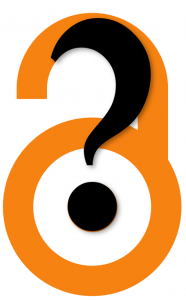 Many of the materials released to or shared on the internet today are openly accessible due to the very nature of the internet itself. This does not mean that they are free from copyright protection or released with any open use provisions. At the same time, many scholars are opting to publish materials Open Access. Open Access publishing arose as a way to remove the paywall barriers normally present between the public and published research.
Many of the materials released to or shared on the internet today are openly accessible due to the very nature of the internet itself. This does not mean that they are free from copyright protection or released with any open use provisions. At the same time, many scholars are opting to publish materials Open Access. Open Access publishing arose as a way to remove the paywall barriers normally present between the public and published research.
Part of the Open Access initiative, Creative Commons licensing was created to help authors release their works while giving their users more freedom to use the material than is allowed by copyright law. Some of these licenses capture the spirit of Open Access and some are considered less open, but if your intended use fits the license then you are free to use the material. This has, in effect, contributed to an online environment where openly accessible, free to use, and Open Access are sometimes but not always synonymous.
Additional Resources:
- The library has a guide to help with your questions of copyright here: https://guides.lib.usf.edu/copyright
- The Budapest Open Access Initiative established what it means to be open access; find out more here: http://www.budapestopenaccessinitiative.org/boai15-1
- Wikipedia’s article on Open Access provides a handy history: https://en.wikipedia.org/wiki/Open_access
- Learn more about Creative Commons: https://creativecommons.org/